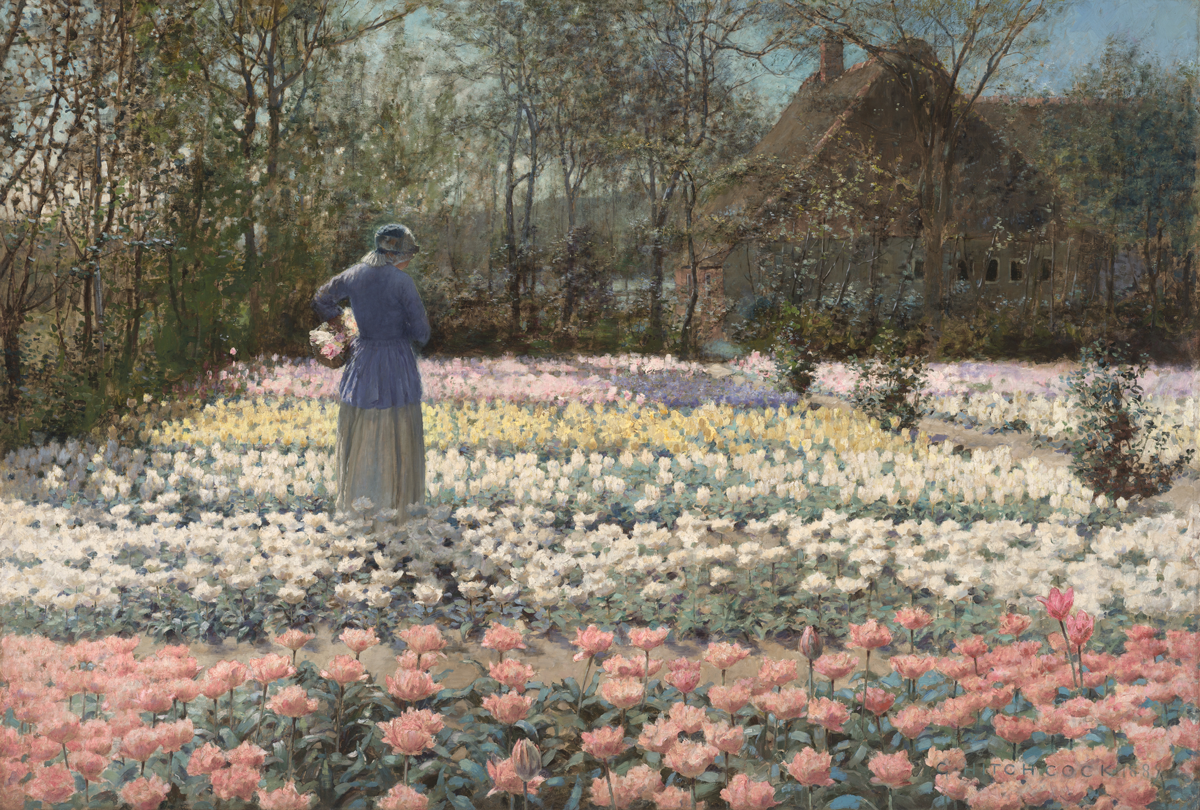
What a beautiful week it has been. The tulips in my garden have been so joyful in the spring sunlight, they remind me of a painting and a particular sale.
There is a stillness and beauty to an English country house interior which has remained unchanged over many years. That stillness and beauty was reflected in George Hitchcock’s ‘La Culture des Tulipes’. I remember seeing the painting for the first time. It was bathed in sunlight, hanging in a dining room as it had for some seventy years. The picture was part of the collection Toovey’s sold in 1998 from the Rusper home of the famous De la Rue family who printed money and stamps for the British Empire.
The American, George Hitchcock (1850-1913) came to London in 1879 to study art. In 1882 he enrolled at the Académie Julian, Paris where he was influenced by the artists Gustave Boulanger and Jules Lefebvre. By 1884 Hitchcock had settled in Egmond aan Zee on Holland’s North Sea coast where he established an art colony. Described as the ‘Painter of Sunlight’ Hitchcock painted en plein air.
‘La Culture des Tulipes’ depicts a field of tulips bathed in light. A woman wearing a blue coat stands with her back to us. She holds a tulip filled basket in her left hand. The spring sunlight plays on the tulips and warms her face. The artist’s handling of light, colour and paint is delicate, textured and impressionistic.
There is always an air of expectation and excitement when something extraordinary is about to happen in an auction. All day the De la Rue collection had been setting records and finally we arrived at the George Hitchcock painting. An American buyer had sent his agent. I opened the bidding at £30,000 and before long it was £100,000 quickly rising to £250,000. The bidding, now between the American and a London Gallery on the telephone, was conducted with perfect manners and at speed. The bidding slowed in front of the hushed saleroom – “three hundred, three-twenty at £340,000, fair warning” and the American said “Gee will you take another five”. I paused, “£345,000”, the London Gallery offered its congratulations, withdrew from the fray and my gavel fell. The saleroom burst into applause as the American walked quickly to reception to pay before heading back to Heathrow to catch his return flight on Concorde; he was keen to be back in time to read his two young daughters a bed time story.
Although the canvas was holed and in a poor state it broke all records for the artist at the time.
I had remarked on the holes in the canvas when I first saw the painting in the company of the family. The nephew, John, explained how his Uncle had been practising archery on the lawn. People who love each other very much can sometimes be cross with each other too. On this particular morning he and his mother had argued so he had marched into the dining room and shot at her favourite painting with arrows. Very soon after the young man De la Rue was called up to the Great War and was killed. His mother was heartbroken and forbade that the painting ever be restored. For many years the painting was displayed in America with a photograph of the young De la Rue in his uniform.
Art and objects can afford us such a powerful sense of our place in the procession of human history. So often the greater the human story the greater the price. It always seems rather a hopeful thing that the art world values people more than things.
The news of the sale was reported in the New York Times.